Window glazing refers to the glass and frames of windows, doors, and skylights in homes that can drastically influence thermal performance and save on energy bills while decreasing greenhouse gas emissions.
There are several glazing options available to homeowners today, such as the popular double glazing and windows that are triple glazed. This article compares their energy efficiency, light transmission rates, and noise reduction capabilities.

Windows That Are Triple Glazed: Energy efficiency
Window glazing can be one of the most effective strategies for increasing energy efficiency in a house due to its ability to reduce heat loss, thus cutting heating and cooling costs, minimising condensation buildup, and promoting natural ventilation.
Readers please note that window glazing cannot work independently of other energy-saving building features like insulation, orientation, and thermal mass; it works in concert as a supplement to energy efficient practices
U-Factor & SHGC
U-factor and solar heat gain coefficient (SHGC) measurements are two methods used to assess window energy efficiency. U-factor measures how much heat escapes through windows, while SHGC indicates how much solar radiation passes through them. Windows with higher SHGC ratings can help reduce heating needs during daytime hours; however, their SHGC drops as their angle of incidence increases.
Manufacturers commonly advertise the performance of their windows with U-factor ratings, yet it is crucial that customers understand how these measurements are taken. They take one point in the centre of the glass into consideration without taking into account air leakage around frames or metal spacers used between panes; as such, these ratings do not provide an accurate representation of overall window performance and can often prove misleading.
Modern energy-efficient windows feature reduced U-factors through double glazings or windows that are triple glazed, window special coatings, and insulating gases between panes of glass. This has resulted in dramatic heat transfer reductions, resulting in decreased energy usage and carbon emissions.
Energy-efficient window glazing can save money and lower carbon emissions in buildings. Furthermore, it can lower HVAC system loads to extend their lives and protect interior furnishings from UV rays, helping prevent furniture, floors, carpets, and artwork from fading or being damaged due to UV radiation, as well as reduce noise pollution by filtering out outside sounds—all benefits that make energy-efficient glazing a smart choice for both homes and commercial properties alike. It is recommended to consult a professional when determining which option best meets your requirements.
Light transmission
The light-to-solar gain (LSG) ratio provides a useful method of comparing the relative effectiveness of different glazing options when it comes to transmitting daylight while blocking unwanted solar heat gains. A higher LSG rating allows more daylight through while still permitting heat loss during cooler months; conversely, lower ratings indicate less sunlight getting through while still permitting escape during warm months. Ballistic glazing, however, has wider ranges of VLT ratings due to the different materials and thicknesses employed in its construction.
As a general rule, having windows with lower U-factors is generally more energy efficient as they provide greater insulation against heat transfer than other glazing types. U-factor calculations must take into account all aspects of performance within the glazing unit, such as framing and spacers, as these factors may alter thermal values and can impact U-factor values significantly. Factors like frame material type and type, glazing coating type, coating thickness, and quantity, as well as air gap size, can all have an effect on the overall U-factor of windows.
There is great variation among types of glazing when it comes to their luminous transmittances, with laminated, monolithic, coated, and applied film glazings all having transmittances ranging from around 0.97 to 0.0.1; these data were taken from Lawrence Berkeley National Laboratory’s International Glazing Data Base, which measures luminescent flux at each glass’s surface to determine its transmittance curves.
These spectral transmittance curves for various window glazing types can be compared using the CIE CRI (CIE Colour Rendering Index) criterion to compare their transmittance curves, and results indicate that most fail to meet this DC criteria, except laminated or monolithic window glazing with an above 90% transmittance rating.
Not only should manufacturers consider the luminous transmittance and colour rendering capabilities of smart glazing options, but it is equally essential to take into account the colour rendering capabilities of these glazing products. Both Dangol et al. [31] and Islam et al. [32] reported that observers preferred LED SPDs with Duv values close to or above the black body locus for optimal colour perception; this is because transmission chromaticity correlates directly with CCT, thus impacting perception of colour perception. It is imperative that manufacturers provide both Duv and DC values when manufacturing glazing products to enable comparisons of product colour quality between different types.
Window Glazings & Noise reduction

Noise reduction should be one of the key considerations when purchasing new windows; this is particularly pertinent to urban or busy road dwellings.
Acoustic glazing is a type of double or triple-glazed window specifically designed to reduce outside sounds from entering your home. It uses laminated glass with polyvinyl butyral (PVB) filler between panes to absorb and reflect sounds between 1000 and 3000 Hz and block them out entirely, allowing you to enjoy peace and quiet and get a good night’s rest.
There are other methods available for improving windows’ acoustic properties, including optimising air space, mixing pane thicknesses, and adding extra panes. These strategies may help decrease their STC rating, an indicator of how effectively they block outside noise.
Single-pane windows do not provide adequate insulation against fluctuating temperatures or noise levels and have little to no impact on noise reduction. To increase the soundproofing performance of windows, install double- or triple-glazed units with low-emissivity glass. These types of units feature microscopically thin coatings on their surfaces, which help reflect heat away from your home’s interior and lower energy bills.
Window manufacturers have taken noise issues seriously and now provide many windows with noise-reduction properties. These windows utilise a space of about 1/2″ between layers of glazing that is typically filled with either argon or krypton gas; both gases are inert, clear, and odourless, so they work well within this gap.
Acoustic windows usually carry a higher price tag, but they can help decrease exterior noise levels and create a more relaxing home environment. While the extra cost may increase over time, their increased comfort can often justify themselves in providing peace of mind and increased peace.
Window Maintenance
As a homeowner, you may have discovered that your windows aren’t energy efficient enough to meet your standards. Re-glazing can help improve their energy performance; this process involves applying putty to the window frame and adding new glass. Re-glazing will increase insulation by sealing and insulating better, providing more comfort during cold months. Depending on the number of panes of glass as well as the type of glaze material used and frame material choice,
Window glazing comes in many varieties. From single to triple glazing options, energy-efficient windows offer many advantages; those featuring more panes of glass help save on energy consumption, while some models even regulate how much heat transfers through them.
Double-glazing windows are the optimal choice, as they are highly energy efficient and will save money long-term. In addition, their double layer reduces condensation and noise levels significantly while helping to protect furniture from UV rays from sunlight.
Retrofitting existing windows with laminate glazing may also provide better sealing and may bring greater energy savings, although it won’t compare to replacing them with double-paned units. Retrofit glazing may also be an ideal solution when dealing with custom or historic windows that cannot be easily replaced.
Maintenance-wise, keeping your window glazing clean can prevent mould and mildew buildup as well as help maintain structural integrity and extend the lifespan of windows. Regular window cleaning with high-quality products such as window cleaner or glass polish is the best way to keep them in great shape.
Window glazing refers to inserting glass panes into a window or door frame for decorative or functional reasons. Glazing can either be single-pane or double-pane, as well as the putty that holds them in place. While window glazing can be used during new construction projects, more often it is used as a way of replacing or repairing existing windows.
Types of Glazing
When it comes to selecting the right window glazing for your home, the choices can be overwhelming. Here’s a simplified list of glazing types that can enhance your home’s efficiency, comfort, and aesthetics:
- Double Glazing:
Two panes of glass with an insulating layer of air or gas in between.
Benefits: improved thermal insulation, reduced energy bills, and noise reduction.
- Low-Emissivity (Low-E) Glass:
Glass with a microscopically thin, transparent coating that reflects heat.
Benefits: Minimises the amount of infrared and ultraviolet light that comes through the glass without compromising light transmission.
- Triple Glazing:
Three layers of glass with two insulating air or gas spaces.
Benefits: superior insulation, ideal for very cold climates, and excellent noise reduction.
- Tinted Glass:
Glass with added colour or tinting to reduce glare and heat gain.
Benefits: increased privacy, reduced glare, and better control over indoor temperature.
Laminated Glass:
Two or more layers of glass bonded together with an interlayer.
Benefits: safety and security, sound reduction, and UV protection.
Choosing the Right Glazing
When selecting glazing, consider factors like your climate, the direction your windows face, and your home’s design. It’s not just about the glass; proper installation and frames are crucial to the performance of your windows. Consult with a professional to make the best choice for your home.ability.
| Glazing Type | Thermal Insulation | Cost | Sound Insulation | UV Protection | Durability | Notes |
|---|---|---|---|---|---|---|
| Single Glazing | Poor | Low | Poor | Minimal | Low | Single pane of glass, offers basic protection with minimal insulation. |
| Double Glazing | Good | Medium | Good | Better | Medium | Two panes of glass with air or gas in between, significantly better insulation than single glazing. |
| Triple Glazing | Excellent | High | Excellent | Best | High | Three panes of glass, offers the best insulation for temperature and sound. |
| Low-Emissivity (Low-E) | Very Good | Medium-High | Good | Excellent | Medium-High | A coating on the glass that reflects heat, improving thermal performance without increasing the number of panes. |
| Tinted Glazing | Good | Medium | Good | Good | Medium | Contains added color or tint to reduce glare and heat gain. |
| Tempered Glass | Good | Medium-High | Good | Good | Very High | Heat-treated to be stronger and safer than regular glass. |
| Laminated Glass | Good | High | Excellent | Excellent | High | Consists of layers of glass bonded with interlayers, providing safety and sound insulation. |
| Reflective Glazing | Good | Medium-High | Good | Good | Medium | Has a metallic coating that reflects heat and light, reducing glare and heat gain. |
- Thermal insulation refers to how well the glazing retains heat inside a building.
- Cost: Relative cost of the glazing type; this can vary based on region and manufacturer.
- Sound Insulation: The ability of the glazing to reduce noise from outside
- UV Protection: The effectiveness of the glazing at blocking ultraviolet rays from the sun
- Durability: how resistant the glazing is to breaking and how long it is likely to last before needing replacement.
Other Types of Window Glazing Available
While the most commonly discussed types of window glazing—such as double, triple, and low-emissivity (Low-E) glass—offer a range of benefits for thermal efficiency and comfort, the world of window technology is vast and varied. In this section, we’ll explore other innovative glazing options that might not be as widely known but can offer unique advantages for specific needs and preferences. From advanced energy-saving technologies to glazing that prioritises security or aesthetic value, these alternative solutions could be the perfect fit for your property. Let’s delve into the array of other window glazing types available, each with its own set of features to enhance your home’s performance and appeal.
Double-Skin Wall
A double-skin facade is a modern building facade design featuring two layers of glass separated by an air gap, providing increased transparency compared to a conventional frame-supported curtain wall while still being energy efficient; the air gap acts as a thermal cushion between summer and winter elements, helping reduce heating and cooling costs and increasing overall cost efficiency.
This type of design also helps increase insulation by limiting heat loss through glazing surfaces and decreasing CO emissions in a building.
As a result, “breathable” facades have become an increasingly popular option for high-rise buildings because of their environmental credentials. 30 St Mary Axe (more commonly known as The Gherkin) and 1 Angel Square are two buildings that have employed this glazing type effectively in order to achieve green ratings.
These facades can either be open or closed depending on climate and building requirements, with open cavity facades employing either a fan- or mechanically driven venting system to facilitate air exchange for ventilation purposes; these systems can even be adjusted according to specific projects for specific climate zones.
Closed cavity facades require a pressurised supply of conditioned air delivered through an integrated ventilation system into a sealed airspace between inner and outer glazed skins, with its contents then vented out through openings in the outer skin of the facade, offering greater flexibility on each floor, increased occupant comfort, greater efficiency in the use of existing infrastructure, reduced energy consumption, and ultimately lower energy consumption.
Double-skin facades are an ideal solution for many projects, ranging from office blocks and retail spaces to hospitals. To maximise its benefits, it is crucial that attention be given to detailing and installation; selecting an advanced thermal performance system like NanaWall SL25 would help ensure that it will meet all requirements of your project.
Float Glass
Float glass is commonly found in large windows and facades to offer clear views while increasing energy efficiency. It has also become a popular choice for shower doors and other glazing applications. As it can be processed through various forms of glazing, tempering, laminating, and tempering processes to meet various safety and thermal insulation requirements, float glass manufacturing involves floating the molten glass on a bed of molten tin to form flat, distortion-free sheets of glass.
Pilkington invented and perfected its float glass process in the 1950s, becoming the worldwide standard for producing quality glassware. Composed primarily of silica sand (comprising about 90% of each batch), limestone for strength, and soda ash to lower the melting point, once created, this liquid glass must then be slowly cooled until it forms an annealed sheet that can then be cut and shaped into many different products.
Float glass is the ideal medium for displaying products. With unrivalled transparency and brilliant shine, its transparency accentuates any item on display, showcasing its beauty with elegance. Perfect for shopfronts, showrooms, and countertops alike, laminated versions provide additional security measures.
Glass has become a feature in modern buildings and homes alike for its sleek and sophisticated charm as well as its functionality. Not only is glass used for its aesthetics, durability, and energy efficiency, but it can also serve as a natural light source that connects us to nature by decreasing artificial lighting needs.
Selecting the ideal glazing method and glass for your building project is key to its success. From high-grade float glass for windows to cost-cutting sheet glass options, understanding their differences is key so that you can select the most appropriate one for your task.
Stick Glazing
Glazing refers to the installation of glass in fixed openings in a construction project. This can include windows, doors, skylights, and wall glazing and can feature clear, frosted, or textured glazing depending on visual appeal, privacy, and energy efficiency needs. There may also be variations depending on client requests for their structure.
Stick-glazed curtain wall systems combine aluminium framing and glass panels, offering greater transparency than other forms of curtain wall. There are fewer visible interruptions to the facade with this system, plus it’s a cost-effective solution for mid- and high-rise buildings as its fabrication and erection can take place on-site, significantly decreasing installation time.
Glazing a home is one of the key components to consider when designing an energy-efficient dwelling. Different types of glazing will either retain heat inside or let it escape through different vents, having different impacts on daytime lighting, maintenance needs, noise control, and security needs. While specific glazing products may improve energy ratings, it is crucial that all window designs and performances be assessed with one of Australia’s National Construction Code (NCC)-accredited tools, such as AccuRate, BERS Pro, or FirstRate 5, to determine their effectiveness, as energy ratings can change quite drastically over time.
Double glazing consists of two sheets of glass sandwiching a layer of polyvinyl butyral (PVB), also known as laminated glass, in between them and is used to protect it from breaking into smaller pieces due to human impact. It is often employed in areas that may experience frequent human activity.
Single glazing entails using just a single pane of glass and may not be energy efficient; however, this can be improved by choosing low-emissivity (low-e) glasses that emit less light into the environment.
Structural glazing is a modern variation on traditional capture systems. Its aluminium framing is attached to the structure with steel rods and secured using silicone sealants. It is suitable for mid- and high-rise buildings alike and provides versatile design concepts, making this type of glazing a popular choice among commercial applications.
Frames
Frames can both enhance the aesthetics and provide protection from moisture, insects, dust, and other forms of damage to artwork or photographs, but their selection must not detract from what lies within. Glazing types are especially crucial to ensuring an artwork’s preservation.
No matter if a project calls for glass or acrylic frames, there are various considerations when choosing glazing material. The size of the item requiring framing can have an impact on which type of glazing material to use; larger items might benefit from more robust glazing like glass, while lighter acrylic frames might work best with smaller items hung in high-traffic areas. Also take into consideration your desired location for hanging your item; items located there might require shatterproof materials like acrylic to protect them.
Light conditions also have an impactful influence on what type of glazing material to select for framing purposes. Direct sunlight can cause discoloration to artworks and photographs, so choosing framing materials that offer UV protection (such as conservation clear picture framing glass, which filters out up to 99% of UV rays) may be useful in protecting them from further fading or discoloration.
Anti-reflective glass provides another type of glazing option available to users, which reduces glare or reflection on framed images, making them clearer to viewers by showing more details and colours from artworks displayed within frames. It is especially helpful for projects requiring high levels of clarity, as viewers are better able to appreciate more intricate artwork.
Other types of glazing used can include styrene, metal, and polycarbonate options. Styrene is a lightweight yet sturdy material perfect for protecting delicate artwork; metal and polycarbonate provide additional strength and safety benefits; and polycarbonate also uses less energy in its production and recycling than glass or styrene glazing materials.
Frame and glazing should work together harmoniously and aesthetically pleasingly for maximum effect. While using matching frames and glazing isn’t mandatory, doing so can add depth and dimension to an artwork or photograph when displayed with matching frames and glazing. Premium frames may make the piece seem even more high-end, which makes this an excellent way to ensure their piece will reach an audience beyond its initial target market.

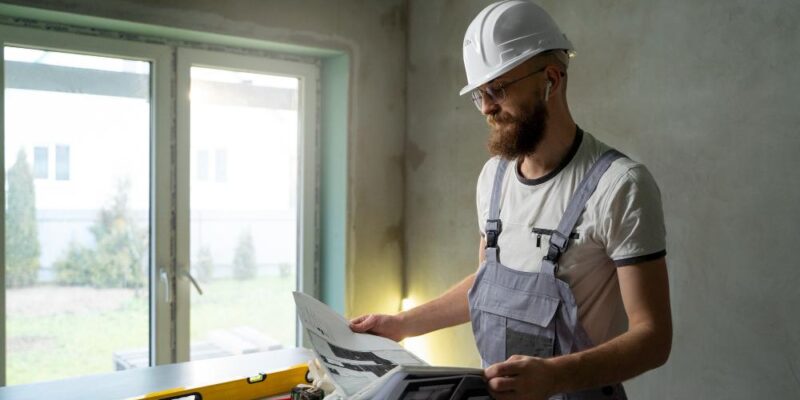


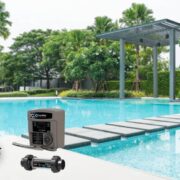



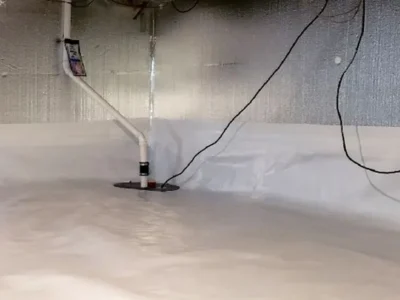
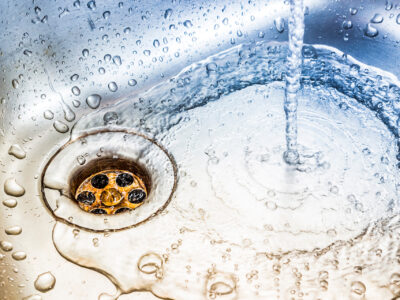

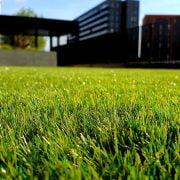
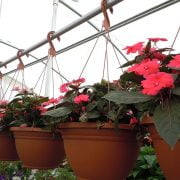

Comments